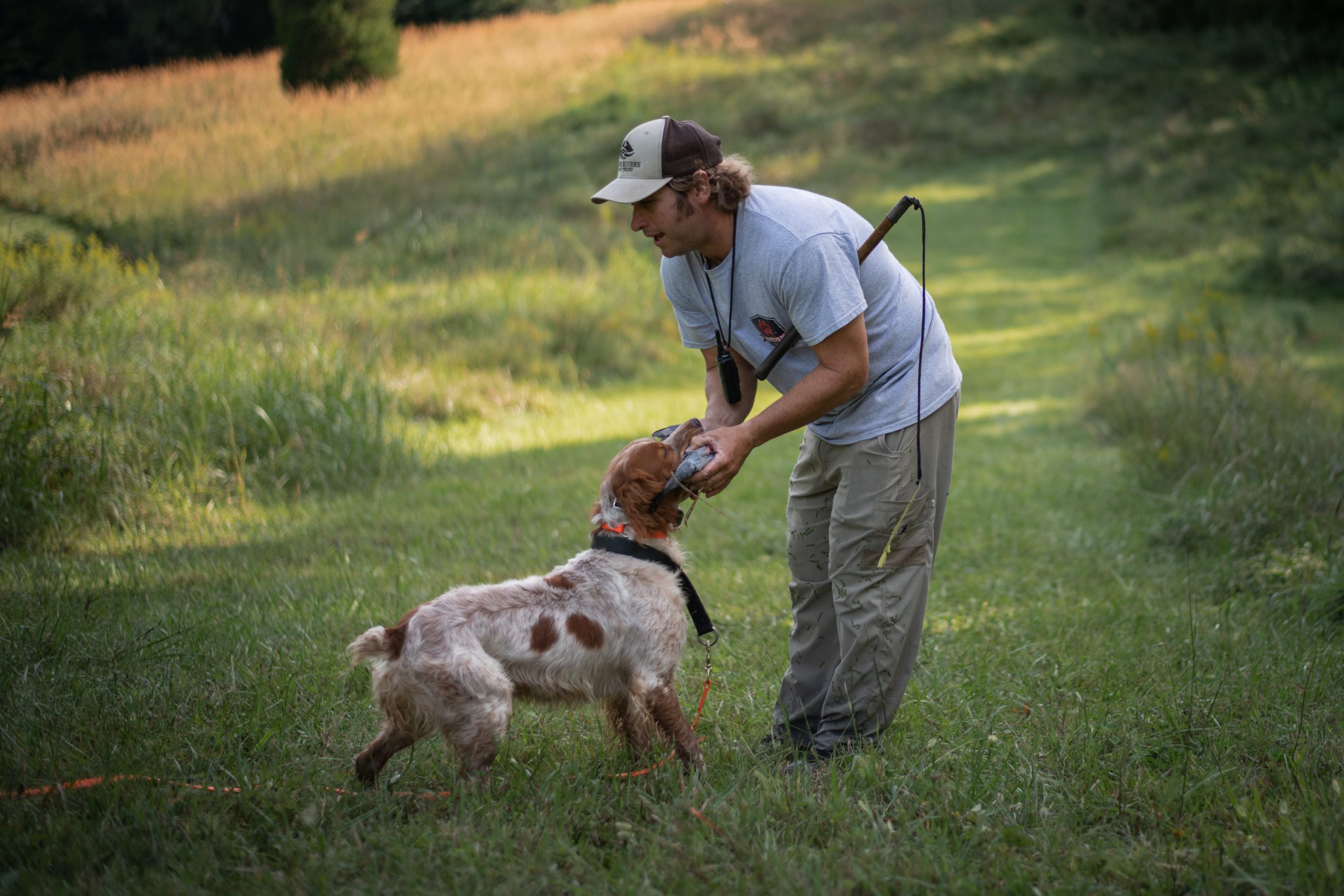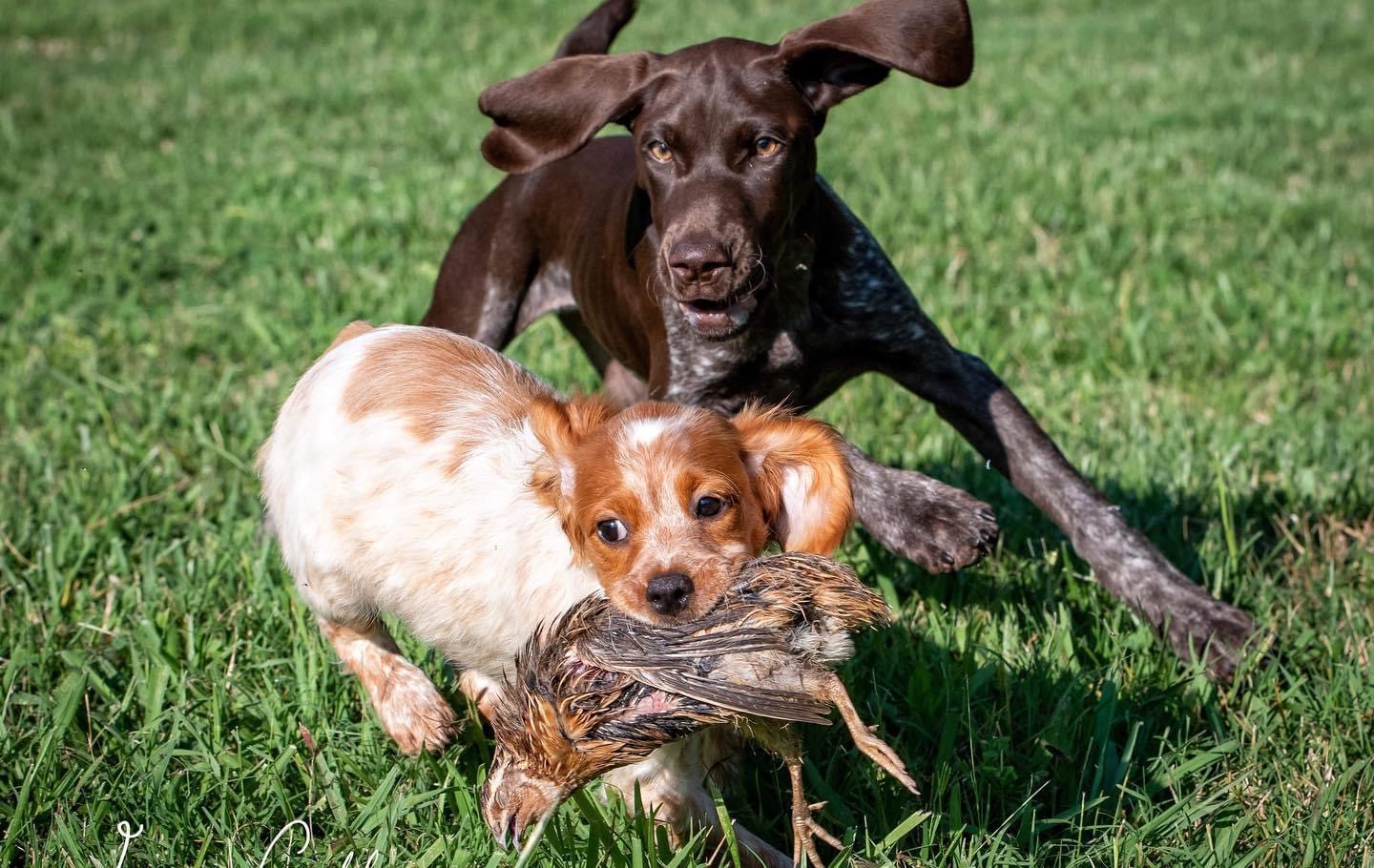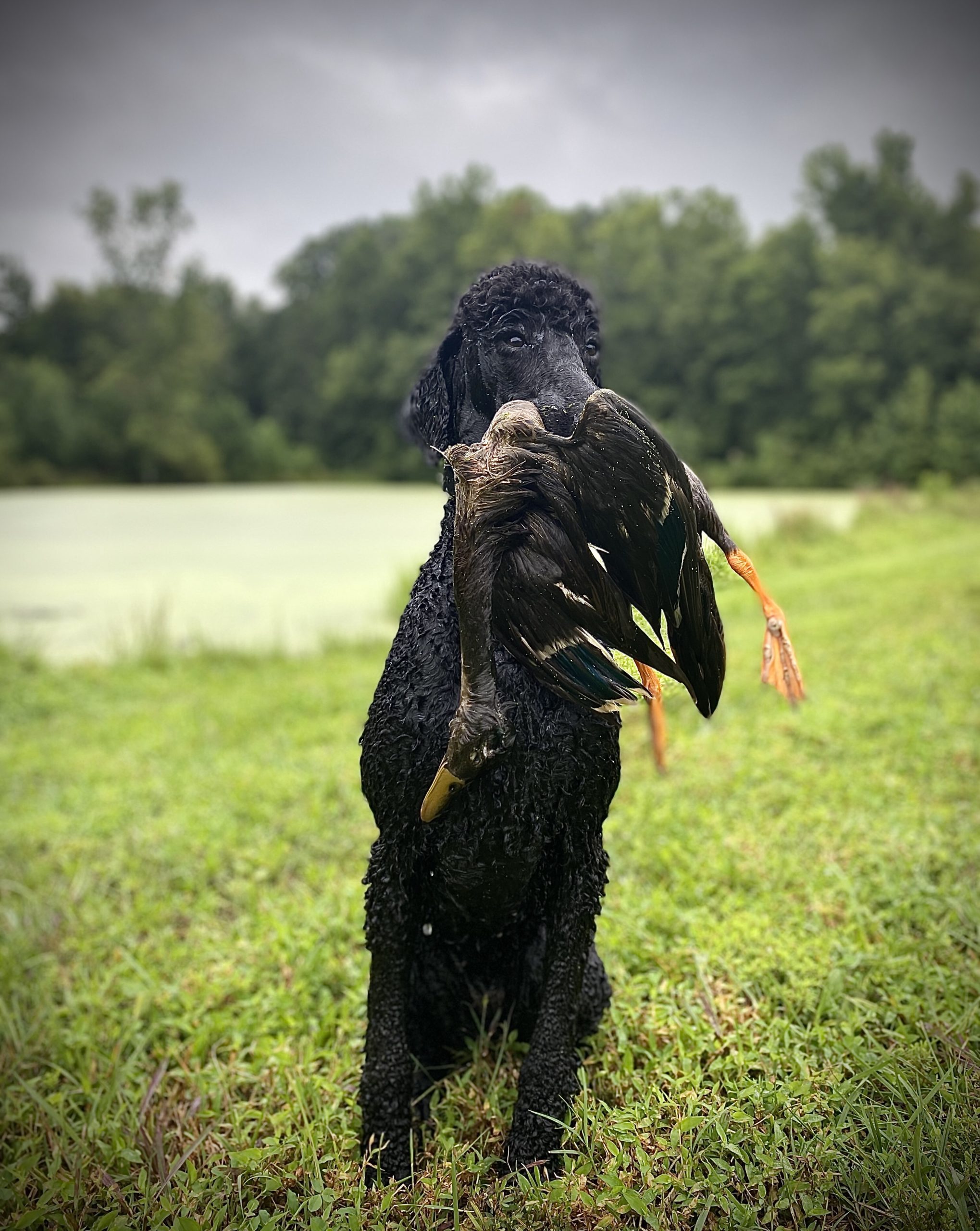I often invite my clients or dog sport friends to join me for training days at the kennel. We are normally going full tilt boogie six days a week and can always use another set of hands. Some days there’s a pile of dogs to work through and other than brief exchanges at the truck between runs very few words are exchanged during the set-up. Oftentimes after a normal day of “upwind” work, I’ll turn to see a look of befuddlement on the face of a guest and I know without asking that they’re confused about what they’ve witnessed. You see, most of the training days during a dog’s tenure here are not going to look anything like a day afield, and they certainly wont resemble a test or trial day.
Most of the reps a dog will receive here (at least in the training phase) will be on the leading end of a check-cord with me in tow and upwind of a pigeon in a launcher, or several launchers. The dog and I may be sharing subtle tactile exchanges through the cord, but its not likely to be witnessed by those observing. Sometimes birds are launched for no apparent reason and the dog never even notices, sometimes we come out of the small training field and I ask my training partner, Emily to entice the dog with a pigeon and give him a chase, and sometimes if things are clicking the dogs stops abruptly for no apparent reason, swells up on his tippy-toes, gets duped into flinching or taking a step and watches a pigeon fly away proud and quiet.
I regularly talk to my clients about a long term training strategy broken down into phases; the exposure phase, the experience phase, and the training phase. The experience and training phases will reoccur in a loop until the dog is “finished” and it could be argued that it will go on indefinitely as maintenance. “Finished” for a pointing dog is usually “broke” steady to wing, shot, and fall. In addition, our dogs test and compete in programs that also require tracking game, water work, and polished retrieving.
In my opinion, “Finished” is a moving target. It takes a couple of years of alternating between training and experience for all of the appropriate behaviors to become automatic and all of the inappropriate behaviors to fade into rare, manageable foibles. Exposure puts a fire in their belly, it is where they acquire the behaviors they are genetically predisposed to. Experience, is the phase in which they gain fluency as predators. Many a supremely competent meat dog became proficient by being turned loose in a game rich environment (exposure), and then taken hunting. I get quite a few young dogs through my training program that have very little exposure and experience, yet have received lots of training… or more accurately, lots of testing. We love to see our dogs point. We love it so much that in training we often drag our dogs straight into game without concern for wind direction and other scenting conditions. We often stop our dogs with the check cord when we believe they have achieved appropriate proximity to the bird. Any movement from our dogs while on point is met with harsh correction, and possibly a launched bird, but often just a correction that is likely to be accompanied by the command “WHOA!”. Once the bird is in the air, the dog, full of desire to chase, are met with a sharp jerk of the cord. Somewhere along the line, the understanding that game makes the dog has slipped from the traditional base of general knowledge and has been replaced with a model of strict compliance and expected manners on birds from the womb.
I like an early starter as much as the next bird dog hobbiest, but some of my slower developing dogs have turned into really strong “finished” dogs when given slow exposure and time to grow on their own before breaking them out. Bird dogs need to bump birds to learn how not to crowd them, they also need to want to find them before they can bump them. Not every bird contact in the wild is going to perfectly perpendicular to the scent cone, so why should we expect them to happen that way in training. Sometimes the launcher needs to pop based solely on proximity. A dog that sees a thousand tracks on-lead with the wind at their back will become much more proficient in a recasting situation than a dog that is turned loose and expected to figure it out on their own. A retriever gains the confidence to run a long blind retrieve because he’s seen dozens and dozens of known pattern blinds before being asked to leave cold for the first time, and just because he’s become proficient with cold blinds doesn’t mean that it’s time to quit training. I believe the same holds true for all working dogs. By all means, challenge your dog in training. Just remember theres a time to train and a time to test, and a time to break the set-up down and simplify. The goal is to leave the field a little better than you left it last time with a dog that is eager to get back out there. Good luck.




